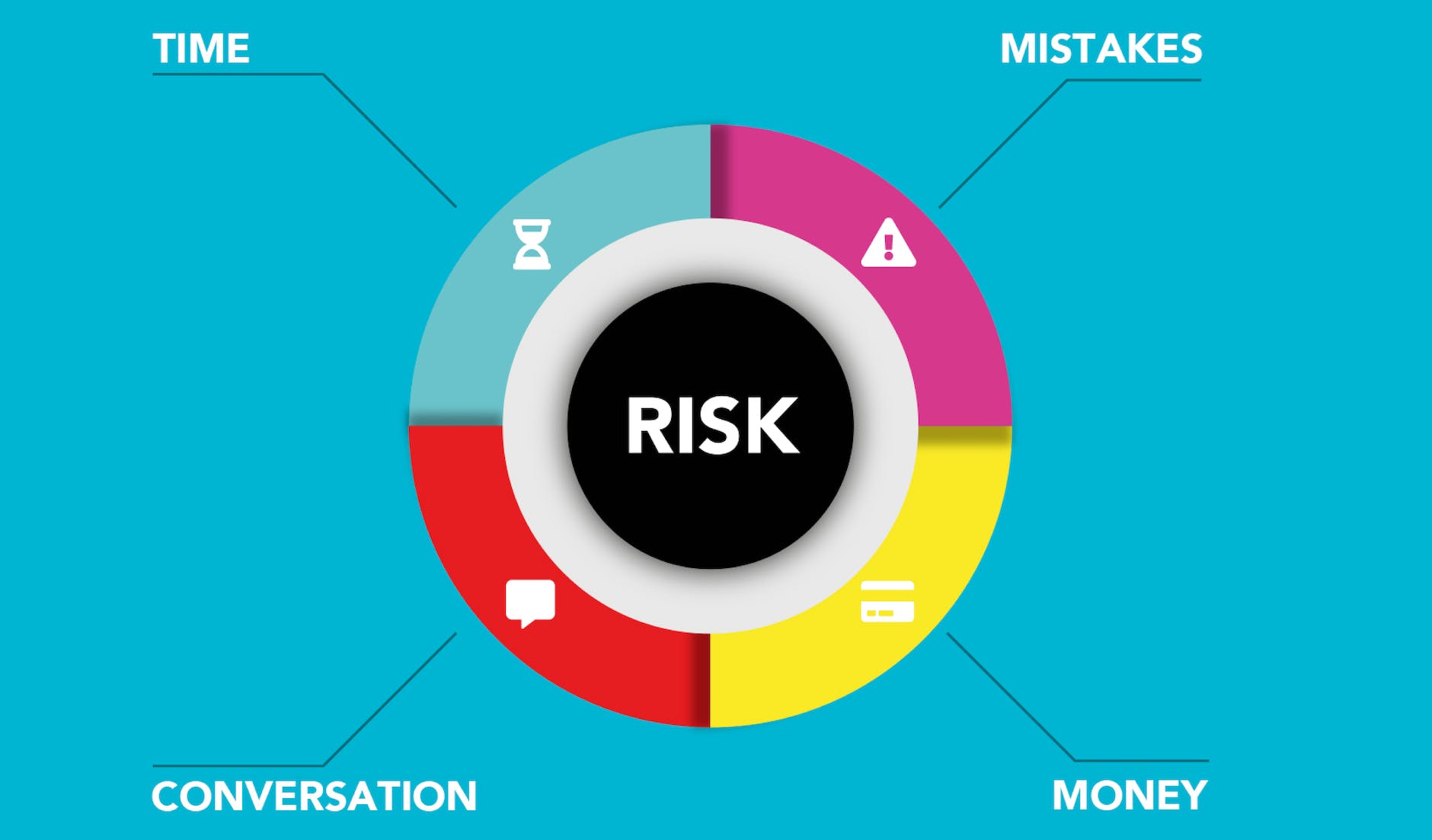
Risk Management
Successfully running a business involves more than having a great product or service. It also requires effective risk management to navigate and mitigate potential risks. Unfortunately, many myths surrounding risk management can hinder its implementation and ultimately impede business growth.
In this blog post, we will explore the world of risk management and debunk seven common myths that have been stopping businesses from achieving their full potential.
From the misconception that risk management is solely for big corporations to the belief that it stifles innovation, get ready to uncover the truth behind these myths and unleash the power of effective risk management in your business.
Debunking 7 Myths Regarding Risk Management For Your Business
Myth 1: Risk Management is Only for Big Corporations
Why Is Risk Management Essential For Businesses Of All Sizes?
Risk management is not exclusive to big corporations; it’s a critical aspect that businesses of all sizes must embrace. Managing risks can safeguard your business’s longevity and success, whether you’re a small startup or an established enterprise.
Potential Consequences Of Neglecting Risk Management For Small Businesses
Neglecting risk management can have severe repercussions, especially for small businesses. From unexpected financial losses to reputational damage, the consequences can be devastating. Don’t let the size of your business deceive you into thinking you’re immune to risks.
Examples Of Risk Management Practices That Small Businesses Can Implement
Small businesses can adopt risk management practices without breaking the bank. One effective solution is leveraging risk management software designed to suit smaller enterprises’ needs.
These tools offer intuitive interfaces, risk assessment templates, and customizable features, empowering small businesses to identify, assess, and mitigate risks efficiently. Don’t let the myth fool you—risk management software is an accessible and valuable resource for businesses of all sizes.
Myth 2: Risk Management is Too Expensive
The Misconception That Risk Management Is A Costly Endeavor
Let’s debunk the notion that risk management is a financial burden. Contrary to popular belief, investing in risk management is a wise and cost-effective decision. It’s an investment that saves you from potential financial disasters.
The Long-Term Cost Savings Associated With Effective Risk Management
Effective risk management leads to long-term cost savings. By identifying and mitigating risks proactively, businesses can avoid expensive crises and minimize financial losses. Prevention is always cheaper than cure, and risk management software can be your secret weapon.
Affordable Risk Management Strategies And Tools Available To Businesses
Fortunately, affordable risk management strategies and tools are available to businesses. Risk management software provides a comprehensive solution without breaking the bank.
With features like risk assessment, mitigation planning, and automated reporting, these tools streamline the process and make it accessible to businesses of all sizes. Don’t let cost concerns keep you from implementing a robust risk management strategy.
Myth 3: Risk Management Limits Innovation and Creativity
How Does Risk Management Foster Innovation?
It’s time to debunk the myth that risk management stifles innovation and creativity. Risk management software can catalyze innovation by providing a structured framework encouraging calculated risks and smart decision-making.
Examples Of Successful Companies That Integrate Risk Management Into Their Innovation Processes
Numerous successful companies have embraced risk management as an integral part of their innovation processes. They understand that managing risks early on allows for a more confident and adventurous exploration of new ideas. These companies have seamlessly integrated risk management into their creative workflows and have reaped the rewards.
How Can Risk Management Help Identify And Mitigate Risks Associated With New Ideas And Ventures?
Identifying and reducing risks related to new ventures is essential, and risk management software plays a significant role in the process. It helps businesses assess potential risks, develop contingency plans, and make informed decisions, ensuring that innovative ideas are implemented with minimal disruptions. So, rather than limiting innovation, risk management software becomes the safety net that allows creativity to flourish.
Myth 4: Risk Management Guarantees 100% Safety
The Misconception That Risk Management Eliminates All Risks
It’s important to clarify that risk management does not guarantee complete safety or eliminate all risks. Instead, it identifies, assesses, and mitigates risks to an acceptable level, considering the potential rewards and benefits.
The Concept Of Risk Tolerance And Balancing Risks And Rewards
Understanding risk tolerance is critical. Balancing risks and rewards is a delicate art. Risk management helps businesses define their risk appetite, determining the level of risk they are willing to accept in pursuit of their goals. It enables informed decision-making by weighing the potential benefits against the associated risks.
How Does Risk Management Effectively Reduce The Likelihood And Impact Of Risks?
Effective risk management significantly reduces the likelihood and impact of risks. By implementing risk mitigation strategies, businesses can proactively address vulnerabilities and minimize the potential negative consequences. While it cannot eliminate all risks, it provides a structured approach to navigate uncertainties and safeguard business interests.
Myth 5: Risk Management Is Solely the Responsibility of the Risk Manager
Risk Management Is A Collective Effort Involving All Employees
Risk management is not a one-person job; it requires a collective effort from all employees. Everyone within the organization is crucial in effectively identifying and managing risks.
The Role Of Leadership In Fostering A Risk-Aware Culture
Leadership plays a significant role in fostering a risk-aware culture. By setting the tone from the top, leaders can create an environment where risk management is valued and integrated into daily operations. Their responsibility includes emphasizing the significance of risk management and furnishing essential resources and support.
Practical Tips For Involving Employees In Risk Management Processes
To involve employees in risk management processes, encourage open communication channels, provide training and education, and empower employees to identify and report risks. By fostering a culture of risk awareness and involving all stakeholders, businesses can create a more resilient and proactive approach to risk management.
Myth 6: Risk Management is a One-Time Activity
The Importance Of An Ongoing And Dynamic Risk Management Approach
Risk management is not a box to be checked once and forgotten; it requires an ongoing and dynamic approach. Embracing this mindset is vital for businesses to stay ahead of evolving risks and uncertainties.
The Benefits Of Regularly Reviewing And Updating Risk Management Strategies
Regularly reviewing and updating risk management strategies brings numerous benefits. It enables businesses to adapt to changing circumstances, identify new risks, and capitalize on emerging opportunities. By staying proactive and agile, companies can minimize potential disruptions and maximize their ability to navigate challenges.
Establishing A Continuous Risk Management Framework
To establish a continuous risk management framework, businesses should prioritize regular risk assessments, encourage employee feedback and input, and leverage risk management software.
This software provides a centralized platform for tracking risks, monitoring mitigation efforts, and facilitating collaboration across departments. By embracing a continuous approach, businesses can effectively manage risks and maintain a competitive edge.
Myth 7: Risk Management is Complex and Requires Expertise
The Misconception That Risk Management Is Overly Complicated
Let’s debunk the myth that risk management is a complex maze. Contrary to popular belief, risk management can be approached practically and straightforwardly, thanks to user-friendly risk management software.
User-Friendly Tools And Frameworks Available To Simplify Risk Management Processes
Gone are the days of convoluted spreadsheets and overwhelming documentation. Modern risk management software provides intuitive interfaces and streamlined workflows that simplify the process. These tools offer pre-built frameworks, customizable templates, and automated features that make risk management accessible to businesses of all expertise levels.
Resources And Recommendations For Businesses To Enhance Their Risk Management Capabilities
Businesses can explore training resources, online courses, and industry best practices to enhance their risk management capabilities. Additionally, seeking guidance from risk management experts or consulting services can provide valuable insights and support. Remember, risk management software is your ally in navigating the complexity, empowering you to manage risks confidently.
In Conclusion
Now that we’ve debunked the risk management myths, it’s time to take action. Don’t let these misconceptions hold you back from managing your business. Prioritize risk management; you’ll fortify your business against uncertainties and pave the way for success.






